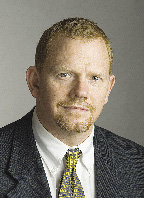Last year I wrote about the 25th anniversary of the Connecticut Transfer Act, the notorious Environmental Statute routinely blamed on urban decay and lack of investment/development in Connecticut's cities and towns. Now, after 25 years and numerous attempts, it appears that the Transfer Act statute will sunset. Last year, under the direction of Commissioner Dan Esty, the new Connecticut Department of Energy and Environmental Protection (DEEP) embarked on an ambitious and focused process to transform Connecticut's Cleanup Programs. DEEP formed six workgroups made up of representatives from the environmental consulting community, environmental attorneys, industry representatives, environmental protection groups, public advocacy groups, and DEEP staff. Each group was tasked with evaluating specific elements of existing Connecticut environmental statutes, regulations, and programs, including but not limited to current effectiveness of the cleanup programs, entry points into and exits out of a clean-up program, the Licensed Environmental Professional program, and liability relief.
Over 90 stakeholders participated in the process, with each workgroup providing a report to DEEP. One dominant theme that emerged is that Connecticut's existing environmental statutes (16 in all) create confusion, are difficult to navigate, and are an impediment to urban redevelopment, which is the primary driver of soil and ground water remediation efforts. Most stakeholders recognize that without redevelopment initiatives, public or private, funding is usually lacking to undertake clean-up efforts and see them through to completion. Even with EPA assessment grants and other funds from the Connecticut Department of Economic and Community Development (DECD), private development money and vision is needed to bring brownfields back into productive use but our existing cleanup programs discourage such investment. Even more problematic, under the existing statutes and programs, properties with minor releases and low risk conditions are often caught up in expensive and lengthy investigation iterations that impede economic development, while other highly contaminated properties that actually may threaten and harm human health and the environment fly under the radar and never enter a cleanup program.
The majority of stakeholders embraced the idea of a single environmental cleanup program rather than the current myriad of statutes and regulations. The Massachusetts Contingency Plan was often cited as a model program. A common vision identified by the workgroups is to have a unified, cohesive and comprehensive environmental statute governing pollution that protects human health and the environment. Within this statute, there would be defined a clear and unambiguous set of events and/or conditions that define the circumstances in which a responsible party or agency must take certain, specified actions to comply with the environmental statue. Most importantly, the statute would define a clear, risk-based, unambiguous, and practical process for responsible parties to achieve closure and exit the program.
DEEP compiled the workgroup reports and in December 2011 released its report "Comprehensive Evaluation of the Connecticut Cleanup Program and the Proposal for Transformation" to Governor Malloy and the Joint Legislative Committees on Environment and Commerce. This report, as well as the individual workgroup reports, has been published on the DEEP Cleanup Transformation webpage - www.ct.gov/deep/remediation-transform.
Throughout this process, DEEP has held numerous public comment periods. The public has clearly stated that while the transformation is welcome and overdue, new legislation and associated regulation should not be rushed and sufficient time should be provided to develop details needed to allow the new program to succeed. DEEP appears to be listening. On February 28, 2012, DEEP announced that it will extend the transformation process, with a new goal of proposing new legislation for adoption in January 2013. Additional details are expected to be released by DEEP this month.
So for now the environmental, real estate and industrial communities will have to live with the Transfer Act and other environmental statutes, regulations, and programs in Connecticut. And while the Transfer Act may sunset at some point in 2013, it is important to note that sites already subject to investigation and remediation under the Transfer Act prior to new legislation will likely be required to complete all obligations under the Act. In addition, under the new legislation, sites with releases and conditions will be required to go through investigation and cleanup to be protective of human health and the environment. That element of Connecticut's Cleanup Program will never go away, and with good reason as our environment needs to be preserved and human health protected from unnecessary exposure to regulated compounds, but hopefully we will end up with a program with well-defined entry points and exits commensurate with the magnitude of the release or the risk associated with the conditions. It will be well worth the wait to get it right.
Samuel Haydock, MS, LEP is director, Northeast Environmental Operations, at BL Companies, Meriden, Conn.
Tags:
New commissioner, new name and a new vision for Connecticut's cleanup program
March 15, 2012 - Connecticut









